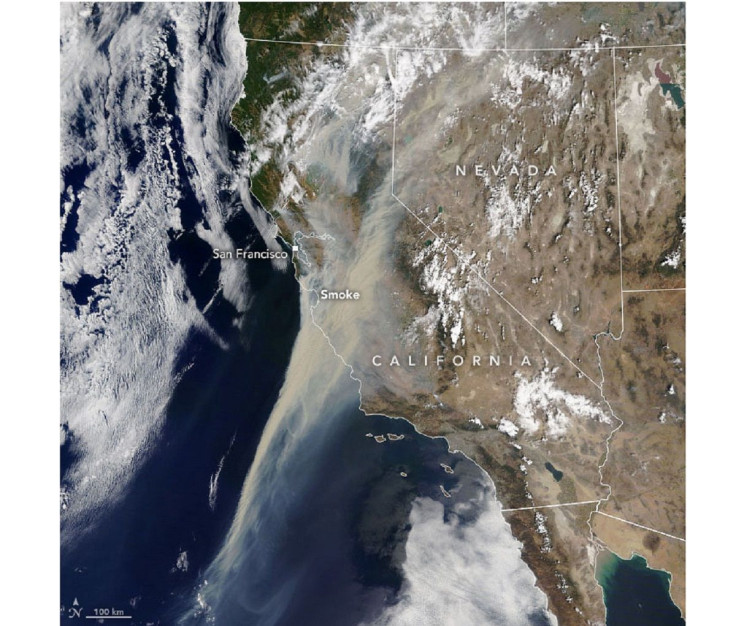Instrument Aboard ISS Captures Extreme Temperatures In Death Valley
KEY POINTS
- California is experiencing a heatwave, logging intense temperatures in recent days
- An instrument aboard the ISS also logged the extreme temperatures in Death Valley
- The heatwave is just one of the crises California has had to face in recent weeks
An instrument abroad the International Space Station (ISS), 400 km above the earth in space, captured record temperatures in Death Valley, California, just hours before the record was set. It was 3:41 pm PDT (6:41 pm EDT) last Aug. 16 when the scorching temperatures at Death Valley reached 130 degrees Fahrenheit (54.4 degrees Celsius), which is said to be the highest recorded temperature in the U.S. in over 100 years.
Earlier that day, at 8:50 am PDT (11:50 am EDT), the ECOsystem Spaceborne Thermal Radiometer Experiment on Space Station (ECOSTRESS) instrument aboard the ISS also captured the extreme temperatures around Death Valley National Park, logging maximum temperatures of 122.52 degrees Fahrenheit (50.29 degrees Celsius).
7/ If validate the 130° F yesterday would tie for the 3rd most reliably measured, all-time global high temperature and will be the hottest temperature officially verified since July of 1913, also at Death Valley.
— NWS Las Vegas (@NWSVegas) August 17, 2020
134°F - Jul 10, 1913
131°F - Jul 13, 1913
130°F - Jul 12, 1913 pic.twitter.com/o4TpnJG98F
In the image showing the data captured by ECOSTRESS and shared by NASA Earth Observatory, one can see the region mostly in oranges and reds, indicating the scorching temperatures at the time, particularly around Death Valley where a massive patch of deep reds can be observed.
To be clear, the temperatures recorded by ECOSTRESS are land surface temperatures (LST), which are different from air temperatures. LSTs measure the heating of the land surface where solar energy gets absorbed and re-emitted, making them hotter compared to air temperatures.
On Aug. 14, ECOSTRESS also captured the LST throughout Los Angeles County at about 3:56 pm PDT (6:56 pm EDT), capturing a peak LST of 128.3 degrees Fahrenheit (53.5 degrees Celsius) in the San Fernando Valley.

In recent days, California has been battling several crises, including the 11,000 lightning strikes that caused over 370 fires across the state. Although most of which have reportedly been extinguished, several have turned into major wildfires that firefighters are still trying to contain. These fires have led to thick wildfire smoke covering large portions of the state, greatly affecting the air quality.

It doesn't help either that the state is experiencing the blistering heatwave and dry conditions that tend to worsen the wildfires and, even extend the fire season.
Unfortunately, preparing for the wildfire season has been quite difficult because of the coronavirus pandemic. CNBC reported that about 130 firefighters from the California Department of Forestry and Fire Protection are in quarantine from either contracting or being exposed to the virus.
In a CAL FIRE update earlier in the week, Daniel Berlant of the CAL FIRE Information Center noted that even firefighters from other states are already being requested to help extinguish the fires.
Please watch the video below for a statewide update on the fire activity across California and visit https://t.co/sWZPp02O9t for information on how you and your family can be #WildfireReady. pic.twitter.com/RQML7cMzKs
— CAL FIRE (@CAL_FIRE) August 19, 2020
Temperatures in California are expected to remain extremely hot, so people are being urged to remain on high alert for possible evacuation orders and, for even more wildfires to emerge.
© Copyright IBTimes 2024. All rights reserved.





















